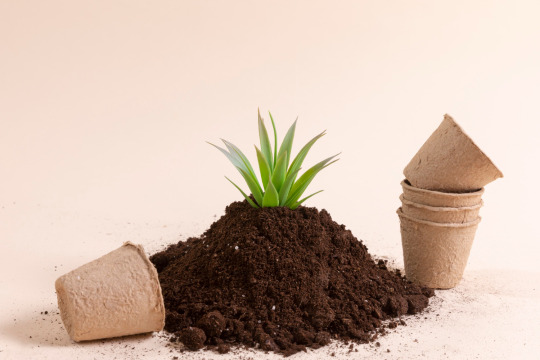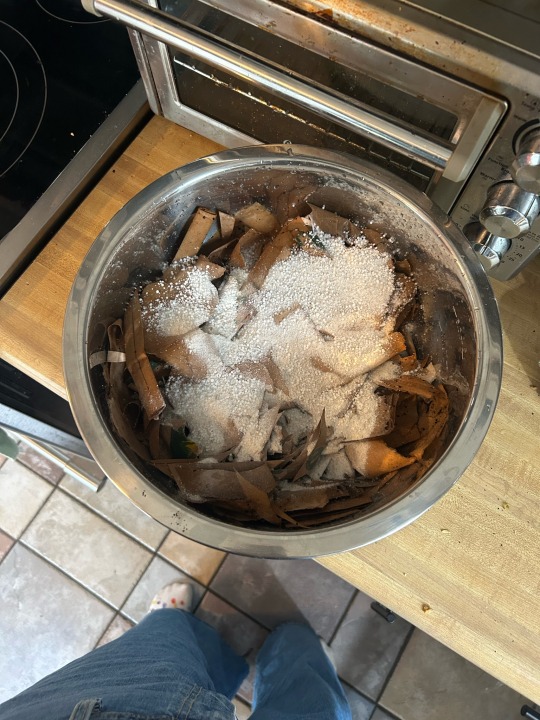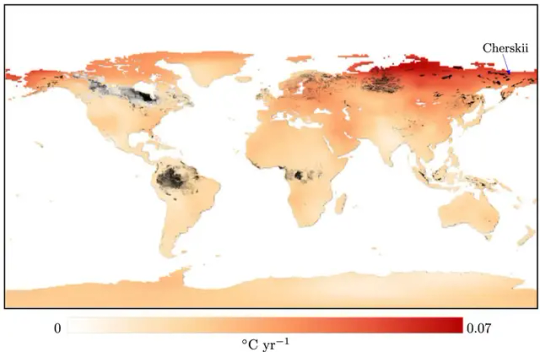#compost accelerator
Explore tagged Tumblr posts
Text
Boost Your Composting Process with Effective Enhancers
Composting is a sustainable and efficient way to recycle organic waste and enrich your soil. However, achieving the perfect compost can sometimes be a slow process. This is where composting enhancers come into play. These substances can significantly speed up the decomposition process, resulting in rich, fertile compost in less time. In this article, we’ll explore the benefits of using composting enhancers, the different types available, and how to use them effectively.

Benefits of Using Composting Enhancers
Accelerated Decomposition: Composting enhancers contain a blend of microorganisms and nutrients that boost the breakdown of organic material. This leads to faster compost production, allowing you to turn over your compost pile more frequently.
Improved Nutrient Content: By speeding up decomposition, composting enhancers help retain more nutrients in the compost. This results in a richer, more fertile product that can significantly improve soil health and plant growth.
Odor Reduction: Slow decomposition can sometimes lead to unpleasant odors. Composting enhancers help maintain a balanced compost pile, reducing the production of foul smells by promoting aerobic decomposition.
Better Temperature Control: Effective composting requires maintaining the right temperature range. Enhancers can help achieve and sustain these optimal temperatures, ensuring that the composting process proceeds smoothly and efficiently.
Types of Composting Enhancers
Microbial Inoculants: These enhancers introduce specific strains of bacteria and fungi to the compost pile, which are particularly effective at breaking down organic matter. They help establish a robust microbial community, speeding up decomposition.
Enzyme Additives: Enzyme-based enhancers contain proteins that catalyze the breakdown of complex organic compounds into simpler forms. These are especially useful for composting tough materials like woody plants and food scraps.
Nitrogen Boosters: Adding nitrogen-rich materials like alfalfa meal or blood meal can enhance microbial activity. Nitrogen is a critical component of the composting process, providing the energy needed for microorganisms to break down organic matter.
Compost Activators: These are often blends of microorganisms, enzymes, and nutrients designed to kickstart the composting process. They can be particularly useful when starting a new compost pile or rejuvenating an old one.
How to Use Composting Enhancers Effectively
Layering Technique: When building your compost pile, layer green (nitrogen-rich) and brown (carbon-rich) materials. Sprinkle the composting enhancer between layers to ensure even distribution. This method promotes optimal microbial activity throughout the pile.
Moisture Management: Moisture is crucial for composting. Ensure your compost pile is as damp as a wrung-out sponge. Composting enhancers work best in a well-hydrated environment. If the pile is too dry, microorganisms can’t thrive; if too wet, anaerobic conditions might develop, causing odors.
Regular Turning: Aeration is vital for the composting process. Regularly turning your compost pile introduces oxygen, which supports aerobic decomposition. Composting enhancers combined with frequent turning can significantly speed up the process.
Temperature Monitoring: Monitor the temperature of your compost pile. Effective composting typically occurs between 135-160°F (57-71°C). If the pile becomes too hot or cools down too much, adjust the balance of green and brown materials and consider adding more enhancer.
Patience and Observation: While composting enhancers can accelerate the process, composting still requires time. Be patient and observe the changes in your compost pile. Adjust your methods as needed based on the progress and condition of the compost.
Conclusion
Composting enhancers are a valuable tool for anyone looking to speed up the composting process and produce high-quality compost. By understanding the different types of enhancers and how to use them effectively, you can optimize your composting efforts. Incorporating these enhancers into your routine will not only save time but also result in a richer, more nutritious compost that benefits your garden and the environment. Embrace the power of composting enhancers and transform your organic waste into a valuable resource more efficiently than ever before.
#Composting Enhancer#compost accelerator#compost booster#organic compost accelerator#best compost accelerator
0 notes
Text
But they're not, you know, divesting themselves of wealth or investing in marginalized communities or anything like that, of course.
I'll keep that in mind when I'm being murdered for being just affluent enough to own a house but not rich enough for that house to be isolated or to have security staff, I guess. 😒
Gosh.

Must be rough for them.
#compost the rich#the difference between the bottom 90% and the 90-99% is negligible compared to the 99% vs the 0.1%#everyone in the 99% is disposable to the 0.1%#the climate crisis is coming fast#and the 0.1% is going to let the 99% die#COVID is already doing half the work for them#the avian flu pandemic will accelerate it#us politics#world politics#the rich can eat shit and die
40K notes
·
View notes
Text










Photo dump cause I don’t have other social media and wants to share :)
hope you’ve enjoyed this photo dump thanks you
#1.) is a selfie (remember I am not ONLY beloved mutual. but also hot). 2.) my wife’s doggie napping after her first hydrocodone (she’s got a#collapsing trachea it’s to help keep her comfortable). 3.) big fat butter cat sleeping with tongue out#5.) my shit head dog trying to play with clean socks 6.) ive ceem#7.) my homegirl with debilitating anxiety 8.) my moms dog taking a nap on my wife’s dog while we were on vacation#9.) is the candles from my shower when the power was out and 10.) is the compost soup I made of brown paper a can of beer and some bacterial#compost accelerant cause it needed a boost :)
1 note
·
View note
Text
THE BEST COMPOST ACCELERATORS TO USE FOR YOUR FARM
Find out about the best compost accelerators to use for your farm right here in this blog post. Contact us for more information and tips on compost accelerator.
0 notes
Text






Introducing the Midnight Cleaning Crew!
Delivering discreet service 24/7, including accelerated composting, disposal of biohazardous waste, and elimination of suspicious odours.
17 notes
·
View notes
Text
Role Swap! Save by the Mage!Viktoria and Assistent!Jayce
I would include game mechanics due to changing the rune. Intead of the inspirational path, which I believe the original crystals were related to, now the rune is gonna be the resolve path, specifically the vitality path.
Instead of the Acceleration rune it would the Vitalization rune.
The crystals would be green reflecting its healing properties, game reference, instead of the blue ones but if used incorrectly it would corrupt.
About Viktoria:
Instead of a snowstorm the mage would cure Viktoria, and her mother, from their illness. It would have been more advanced in this AU. I do imagine that it would be like this scene from Tangled, the rune would be deep into water:

Viktoria would use her crystal as a necklace instead of a bracelet and would hide it under her shirt.
She would be sponsor by Mel! Due to Viktoria saving Elora when she was collecting information of the undercity, this was around the time when Mel was recently banish by her mother. So they're in between 16-18 years old.
So be prepare for Viktoria, Mel and Elora friendship.
It wouldn't be called Hextech but Chemtech, in this AU Viktoria would create it instead of being a thing already, a clean version of the original.
Heimerdinger would be the one finding out about the experiment, due to Viktoria using the lab in off hours. The crystals instead of a explosion would cause hyper-growth in the near plants causing a lot of damage in the labs.
Has to bite her tongue during trial since doesn't have the luxury to say something without making things worse for herself.
Mel manage to having Viktoria banish, it did hurt her doing that to her friend, instead of execute.
After her trial she went to her dorm to retrieve the research that she had hidden, she views banishment like a seatback instead of a end.
About Jayce:
Instead of Singed saying "I thought you understood" he says "Why does anyone commit acts others deem unspeakable? For love." Since he saw that Jayce respond better with emotion which worked.
Singed knows that Jayce is unable to let things go and used that to his advantage. He saw part of himself in Jayce, his more human yet ugliest part. Knows that Jayce just needs find somebody would he do anything to save them.
Jayce stopped being his assistent before enter the academy at 18, he feels guilty in helping him all those years. Would become the assistent of Heimerdinger at some point.
Still a people pleaser and an awkward guy.
Without Hextech, Jayce feels purposeless. He has his own ideas of course but nothing that in his eyes can help people in a meaninful way.
He notice how Viktoria was clearly holding back in her trial he could see fire on her eyes.
After the trial he read all her notes about Chemtech and was awestruck, he needed to find Viktoria.
About their first meeting and partnership:
Jayce is the one to arrest Viktoria, he was in awe when he saw what the crystals could do but end up sounding a bit patronizing about lab safety.
He thought that Viktoria would hang herself in her dorm, she was actually just retrieving her hiding notes from the ceiling, but in Jayce defense it was really dark and couldn't see really well.
At first Viktoria dismiss Jayce believing he was there to mock her but Jayce quickly tell her that he wants to help her in helping people.
"You don't have to ask for permision to change the world.... but you don't have to walk it alone"
Instead of being inspired by believing in her, Viktoria is surprise by how genuine Jayce wants to help people, his sincerity it was make her accept him.
Jayce quits his positions as the dean assistent to start working in Chemtech in Zaun.
Instead of the Hexgates they would create the Fountain of Life, which is the main ingredient for their medicines, their water purification system, composts, etc. Zaun would become a renew place for medicine and healing.
Viktoria is called "The Woman of Change" in Zaun and haves merch (much to her chargrin), Jayce is proud to have a mug of his partner.
The people of Zaun is indifferent about Jayce at worst and barely polite at best. After these two become something official they would call Jayce a "goldigger" or "boytoy".
#arcane#arcane viktor#female viktor#arcane jayce#jayce talis#jayvik#jayce x viktor#role swap au#mel medarda#elora arcane#fem!viktor#fem viktor#genderbent
18 notes
·
View notes
Text
No girl is born hating her body or feeling ashamed of her sexuality. You had to learn that. No girl is born worried that she’ll be judged if someone finds out what kind of sex she enjoys. You had to learn that, too. You have to learn, as well, that it is safe to be loved, safe to be your authentic self, safe to be sexual with another person, or even safe to be on your own. Some women learn these things in their families of origin. But even if you learned destructive things, you can learn different things now. No matter what was planted in your garden, no matter how you’ve been tending it, you are the gardener. You didn’t get to choose your little plot of land—your accelerator and your brakes and your body—and you didn’t get to choose your family or your culture, but you do choose every single other thing. You get to decide what plants stay and what plants go, which plants get attention and love and which are ignored, pruned away to nothing, or dug out and thrown on the compost heap to rot. You get to choose.
==========
Come As You Are (Emily Nagoski)
14 notes
·
View notes
Text
February 2nd, 2024


Thick-legged Hoverfly (Syritta pipiens)
Distribution: Native to Europe, but found throughout Eurasia and North America.
Habitat: Occur wherever there are flowers, but most common around human habitations; common habitats include farmland, gardens and parks. Larvae are most common in rotting organic matter such as compost, manure, silage, and occasionally cadavers.
Diet: Larvae feed on decaying organic matter, while adults feed on many types of flowers. Their most common food plants are water-willow, white vervain, American pokeweed and candyleaf.
Description: The thick-legged hoverfly is called so due to their overdeveloped hind legs. These insects can sometimes be pests, as they occasionally feed on ornamentals, but are generally considered beneficial because they pollinate many common flower species. They also act as bio-indicators, especially to demonstrate the effects of environmental changes on pollinators.
Hoverflies are very agile fliers, and are often found hovering near flowers. This species, however, is very rarely found flying more than a metre above ground level. When they encounter another fly, males will sometimes circle around them; if they're male, this often results in the two males circling eachother, and if they're female, the male may dive at her at an acceleration of up to 500 centimetres per second squared in an attempt to initiate copulation.
Images by Joaquim Alves Gaspar and Stephen Luk.
65 notes
·
View notes
Text
What Materials Are Used in Making Paper Bag Handles?
As businesses and consumers become more environmentally conscious, the shift from plastic bags to paper bags has accelerated globally. But while much attention is given to the bag itself, a key component often overlooked is the handle. The strength, recyclability, and sustainability of a paper bag significantly depend on the type of handle and the materials used to make it.
At Prakash Machineries Pvt Ltd, we manufacture paper bag handle-making machines that support a wide range of eco-friendly materials—helping businesses produce high-quality, sustainable bags at scale.
In this article, we’ll explore the most common materials used in making paper bag handles, their properties, benefits, and how they align with green manufacturing practices.
🌱 Why Handle Material Matters
Handles are not just an accessory. They directly influence:
Load capacity
Durability
Comfort
Recyclability
Using eco-friendly and biodegradable materials for handles ensures that the entire paper bag remains sustainable, making it easier for businesses to meet global environmental regulations and appeal to eco-aware consumers.
🧵 Most Common Materials Used for Paper Bag Handles
Let’s take a closer look at the materials commonly used in paper bag handle manufacturing:
1. 🟫 Kraft Paper
What is it?
Kraft paper is the most widely used material for making twisted and flat paper handles. It is made from wood pulp using the kraft process, which results in strong, tear-resistant, and biodegradable paper.
Features:
Available in brown, white, or printed variants
Comes in rolls of various GSM. (grams per square meter)
100% recyclable and compostable
Ideal for both twisted rope and flat folded handles
Applications:
Grocery bags
Fashion retail bags
Branded promotional bags
Sustainability Score: ⭐⭐⭐⭐⭐
Kraft paper is one of the most eco-friendly materials, especially when unbleached and made from recycled sources.
2. 🧶 Twisted Paper Rope
What is it?
Twisted rope handles are made by twisting narrow strips of kraft paper into a rope-like structure using a twisting mechanism. These ropes are often glued to patch paper before being attached to the bag.
Features:
Lightweight but strong
Clean appearance, available in multiple colors
Recyclable and biodegradable
Applications:
Boutique bags
Gift bags
Takeaway and food delivery bags
Sustainability Score: ⭐⭐⭐⭐⭐
Since it’s made from paper, the twisted rope is fully biodegradable and recyclable. It adds both strength and style without harming the environment.
3. 📏 Flat Paper Strips
What is it?
Flat paper handles are produced by folding and gluing kraft paper into thick, flat strips. They are stronger than twisted ropes and ideal for heavier bags.
Features:
Excellent load-bearing capacity
Smooth surface for better gluing
Stackable design for efficient packaging
Applications:
Supermarket and grocery bags
Bookstore bags
Commercial delivery bags
Sustainability Score: ⭐⭐⭐⭐⭐
Flat handles are made from the same kraft paper as the bag body, making the entire product easy to recycle and appealing to green packaging initiatives.
4. ♻️ Recycled Paper
What is it?
Recycled paper—derived from post-consumer or industrial waste—is now widely used for both twisted and flat paper handles. The quality has improved significantly, making it a practical, eco-friendly option.
Features:
Low environmental footprint
Suitable for short-length or lightweight bags
Available in natural tones or dyed colors
Applications:
Everyday shopping bags
Eco-branded merchandise packaging
Sustainability Score: ⭐⭐⭐⭐⭐
Recycled paper helps reduce deforestation and landfill waste, aligning perfectly with sustainability goals.
5. 🧵 Jute and Cotton Cord (Optional Premium Option)
What is it?
In premium or luxury bags, handles are sometimes made from natural fibers like jute, hemp, or cotton cords. While these are not produced by standard paper handle-making machines, they are still considered sustainable when sourced responsibly.
Features:
Soft, durable, and stylish
Reusable by customers
Higher cost per unit
Applications:
Luxury fashion or jewelry bags
High-end gift bags
Sustainability Score: ⭐⭐⭐⭐☆
Natural fibers are biodegradable, but their cost and manual handling limit scalability.
🛠️ What Materials Do Our Machines Support?
At Prakash Machineries Pvt Ltd, our twisted and flat handle-making machines are compatible with
Kraft paper rolls (brown/white/recycled)
Water-based, non-toxic glues
Patch paper rolls for pasting units
Our machines are engineered for precision, speed, and eco-efficiency, making them ideal for businesses aiming to meet sustainability standards without compromising on productivity.
💡 Tips for Choosing the Right Handle Material
Consider the bag use case: heavier bags (e.g., groceries) need flat or reinforced handles. Lighter retail bags can use twisted paper rope.
Match Your Branding: Kraft paper in natural or printed form complements earthy, sustainable brand images.
Go Recycled Where Possible: Choose FSC-certified or post-consumer recycled kraft paper for maximum environmental impact reduction.
Use Water-Based Glue: Avoid synthetic adhesives; they make recycling more difficult.
🌏 The Future of Sustainable Handle Materials
With the rise of the circular economy, more innovation is happening in the area of biodegradable, plant-based, and upcycled materials for packaging. Research into agricultural waste pulp, bamboo fiber, and algae-based paper may lead to even greener handle options in the future.
At Prakash Machineries Pvt Ltd, we stay ahead of these trends by ensuring our machines remain compatible with emerging paper types, helping you stay compliant and competitive.
🧾 Final Thoughts
In the paper bag manufacturing industry, the handle is just as important as the bag itself—not only for functionality but also for environmental credibility. Using materials like kraft paper, twisted rope, and recycled paper ensures your packaging is not only strong but also sustainable.
With growing consumer demand for eco-conscious products, choosing the right handle material—and the right machinery—is a strategic move for any forward-thinking brand or manufacturer.
Ready to produce sustainable paper bag handles at scale? 👉 Contact Prakash Machineries Pvt Ltd to learn more about our eco-friendly handle-making machines or request a live demo.
#breakfast#delicious#chocolate#alien stage#dan and phil#baking#cake#chris sturniolo#cooking#critical role#paper bag manufacturer#manufacturer#machines#paper bag#paper#v bottom#square bottom
2 notes
·
View notes
Text

Zinc solubilizing bacteria are microorganisms that possess the capability to convert insoluble forms of zinc in the soil into soluble forms, making it more readily available for plant uptake. These beneficial bacteria play a crucial role in enhancing zinc nutrition in plants, thereby promoting improved growth, development, and overall health. By mobilizing zinc in the soil, they contribute to sustainable agriculture practices, aiding in the optimization of crop yields and ensuring better nutrient utilization efficiency.
0 notes
Text
A Whisper In Polyester
Ship: Starco
Summary:
Sleeping in microgravity is a funny business. Sleeping bags can be used at any angle, anchored to any convenient surface. Air currents blowing across your face soothe and relax, and prevent the accumulation of lethal amounts of carbon dioxide. Some say the dreams are better, more vivid. And so are the nightmares.
Fluff, tie in to Space Unicorn.
=/=
This author does not own the Star vs the Forces of Evil franchise. This story was written for personal amusement.
=/=
“Star! Star! Help!”
Marco flailed his arms in vain as he continued to sink into the pitch-black depths of Europa’s subsurface ocean. His thick, titanium diving suit was dead, his comms were down, and the diving-suit-clad zombie dragging him down refused to let go of his leg. He took a deep breath, and looked down, his helmet lights illuminating his yellow, Michelin-man-like legs.
Instead of a single diving-suit clad zombie, a horde of them now clawed at his suit. Marco looked more closely at the zombies. Some had charred, red skin, broiled by ship-to-ship lasers. Some had been half-spattered into goo by kinetic projectiles. And some, victims of anti-ship particle beams, were in the throes of radiation poisoning, vomiting their guts out, their hair gone, and their skin burnt, moaning in pain…
All were clad in the uniforms of the Japanese Space Defense Force. Enemy combatants, killed on his orders.
His suit sprung a leak, and the overwhelming stench of the alien ocean – window cleaner, compost, and coal tar – wafted into his nostrils. He tried to pinch his nose, and smacked his arm against his visor.
“Marco! Marco!”
“Star? Is that you?”
Star, helmet lights blazing and arms outstretched, grabbed Marco’s hand.
The fetid water filled his suit fast, and Marco took a deep breath. This didn’t make sense. The immense pressures of the deep ocean should have knocked him out instantaneously. And zombies weren’t real.
“Marco! Marco! Wake up!”
=/=
Commander Marco Diaz, Joint Government Space Force, awoke with a jolt, and, writhing in his microgravity sleeping bag, slammed into the figure floating over him before careening into a wall.
“Ow! Marco! Are you up?!”
Marco looked around the habitat. Fireproof Velcro. Sleeping bags. His handheld and laptop, which he had left floating in the center of the room and were now pressed up against an air vent.
And in the middle of it all, Star Butterfly, her long hair spread into a broad fan that seemed to cover the whole room.
“Sorry.” He rubbed his forehead. “Just a bad dream.”
“The uhhh… underwater zombies again?” Star pulled herself against Marco’s sleeping bag.
Marco nodded as they drifted towards the ceiling. “Yeah. Europa… really messed me up.”
“Do you… want to talk about it some more?”
Marco shook his head. “It’s late. You need the rest.”
Star opened her mouth to protest, but fell silent as she examined the pained look on Marco’s face.
Marco closed his eyes, trying his best to think of anything other than water and death.
A sturdy weight clamped over his chest, and he began to feel around. Another sleeping bag had been belted to his. He opened his eyes as Star snuggled into her own bag.
“Star, I don’t think…”
“Shhh. It’s okay.” Star hushed. “More mass means less acceleration for a given force. When we’re together, nobody’s going to be pushing us around.”
“More inertia.” Marco replied.
“Yeah, so things can stay the same.” Star said.
Star began to drift off to sleep. Fans whirred gently as they detected the room’s increased occupancy, and the gentle hiss of a valve echoed through the ventilation system.
“Forever?” A whisper in polyester.
Star mouthed her reply.
“Forever.”
=/=
#svtfoe#starco#star butterfly#marco diaz#star vs the forces of evil#star butterfly x marco diaz#fanfiction#svtfoe fandom#svtfoe fanfiction#space
7 notes
·
View notes
Text
Miyawaki Pocket Forest
The Miyawaki method is a method of high-density planting where, after ammending the soil with lots of compost and michoraezal fingi, between 3-5 native plant saplings per square meter are planted.
The native saplings should be chosen with a range of heights in mind, to fill niches all the way from shrubbery to canopy, in order to maximize the plants able to be supported in a given space.
This high-density is meant to stimulate competition among the saplings, encouraging accelerated growth.
For the first 3 years, the saplings need to be tended to with water and weeding, but after that, the forest tends to be self-sufficient.
Plant survival rate within the pocket forest is 99% in the initial years, dropping to 45% as the forest matures and the least well adapted plants are out-competed.
I have a small plot of land, so I decided to try this for myself.
I selected about 80 trees with around 20 speciec (approx 4 plants per species), native to, or around, the midatlantic/appalachian region(s). I have super heavy clay soil, so I amended it with 500lbs of compost. Luckily there's a yard waste recycling plant near me that sells compost at $15/ton, so luckily I was able to get it for cheap. I additionally bought special michoraezal amendment to apply to the plant roots during planting.
A fair amount of my plants have already arrived, so I decided to plant those while I wait for the rest, and let me tell you guys something.
Bros i fucked up big time.
Remember when I said 3-5 plants per square meter? Well my genius brain wanted to work in freedom units, and I thought, "oh a meter is about 3 feet, so that's about 1 plant per square foot!"
A square meter is like, 11 square feet.
I am planting at a density of 11 plants per square meter.
I majored in mathematics you guys.
I don't have enough time/money/rental equipment to add any more area to the planting bed, so I guess I'm just going to keep planting my plus-ultra high density pocket forest.
I'll add pictures wheb I have everything in, so you can see just how stupid I am. At least I guess it's a fun new experiment?
Miyawaki rolling in his grave rn
3 notes
·
View notes
Text
“No girl is born hating her body or feeling ashamed of her sexuality. You had to learn that. No girl is born worried that she’ll be judged if someone finds out what kind of sex she enjoys. You had to learn that, too. You have to learn, as well, that it is safe to be loved, safe to be your authentic self, safe to be sexual with another person, or even safe to be on your own.
Some women learn these things in their families of origin. But even if you learned destructive things, you can learn different things now. No matter what was planted in your garden, no matter how you’ve been tending it, you are the gardener. You didn’t get to choose your little plot of land—your accelerator and your brakes and your body—and you didn’t get to choose your family or your culture, but you do choose every single other thing. You get to decide what plants stay and what plants go, which plants get attention and love and which are ignored, pruned away to nothing, or dug out and thrown on the compost heap to rot. You get to choose.”
- Come As You Are, Emily Nagoski
68 notes
·
View notes
Text
So-called zombie fires in the peatlands of Alaska, Canada, and Siberia disappear from the Earth’s surface and smolder underground during the winter before coming back to life the following spring. These fires puzzle scientists because they appear in early May, way ahead of the usual fire season in the far north, and can reignite for a number of years.
Most scientists believe that zombie fires are the remnants of fires on the surface, but we have identified an alternative cause. Our research suggests that rapid atmospheric warming aboveground can cause peat soils to suddenly heat up to smoldering temperatures underground, all without any spark or other ignition. These zombie fires may be a case of climate-change-driven spontaneous combustion.
Reports of such fires date back to the 1940s, when they were rare events. However, the frequency and intensity of these fires have increased significantly in the past two decades, hand in hand with accelerated warming in the Arctic, the fastest-warming region on the planet.
At the start of 2024, more than 100 zombie fires were active in the Canadian province of British Columbia. Zombie fires have even been recorded near the coldest village on Earth, Oymyakon in north eastern Siberia, where they carried over through multiple winters and account for around 3.5 percent of area burned in the wider region each year.

Red areas are warming fastest, while black and gray areas show carbon-rich peat soils. There is significant overlap between the two, such as in Cherskii in northern Siberia. Map: O’Sullivan et al./Royal Society A; data from Berkeley Earth/PEATMAP
More carbon is trapped in temperature-sensitive Arctic peat soils than is found in the entire atmosphere, and these fires are releasing gigatons of it into the atmosphere. We wanted to know if sudden warming might be directly responsible.
Two Remarkable Results
We developed a mathematical model to explore different what-if scenarios, including how the temperature and carbon content of peat soils respond to changes in the weather and climate. Crucially, our model captures how certain microbes generate heat while breaking down soil and releasing its carbon into the atmosphere.
We obtained two remarkable results:
The first is that those microbes can generate so much heat that underground peat can smolder at around 80 degrees Celsius (176° F) over the winter, ready to ignite in spring. And this can happen without there ever having been a fire in that spot aboveground and without the weather aboveground reaching the sorts of temperatures that would normally be needed for soil to burn.
We call this new state the hot metastable state of peat soils. In this context, “metastable” means a long burn—the hot state lasts for a long but finite time, up to 10 years, until the peat burns out.
Our other key finding is that a sudden transition from the regular cold state to the hot metastable state can be triggered by realistic climate patterns alone, including summer heat waves and global warming scenarios. Most interestingly, the increase in the atmospheric temperature has to be faster than some critical rate to trigger the transition. If the atmospheric temperature increases by the same amount but at a slower rate, bioactive peat soil remains in the regular cold state and never transitions to the hot metastable state.
We still do not have proof of this happening in the real world, and it hasn’t been demonstrated in a lab—for now, this is a phenomenon seen only in our models. But we do know that compost (very similar to peat) can catch fire in the same way. For instance a large fire on the outskirts of London during a heatwave in 2022 was probably caused by a pile of compost spontaneously combusting.
All this suggests that atmospheric temperature is not actually the key critical factor for zombie fires. Rather, it is the rate of atmospheric warming that triggers long burns of underground peat. Put simply, it is not the heat, it is the rate.
How to Fight the Zombies
As the climate warms, the weather is becoming more extreme, and these are precisely the conditions that can lead to more and more zombie fires. This is concerning, as it could kick off a vicious cycle: The gigatons of carbon released from ancient peat soils into the atmosphere are likely to make the climatic changes even worse, which means more fires, so more extreme weather, and so on.
Indeed, zombie fires are an example of a rate-induced tipping point, where a system fails to adapt to too-fast changes in external conditions and transitions from its regular state to a different, often undesired state. It is possible that the contemporary climate is approaching—or has already exceeded—dangerous rates of change for certain natural system, such as bioactive peat soils, which could explain the recent increase in zombie fires.
It appears that the only solution to prevent further zombie fires is to limit climate variability. While policymakers focus on dangerous levels of atmospheric temperature (the heat), climate variability (the rate of change) could be equally or even more relevant to our resilience in the short term.
10 notes
·
View notes
Text

Upping the Ante: The Garden Resource Program
But the big leap forward for Detroit’s urban farming movement came in 2003, when the Earthworks Farm joined forces with the Detroit Agriculture Network, the Greening of Detroit (an organization primarily focused on reforesting the city), and the Michigan State University Extension Service, to found the Garden Resource Program Collaborative. The Garden Resource Program (GRP) which grew out of that collaboration started by providing seeds and some gardening resources (tilling, compost, etc.) to 39 community gardens and 41 family garden participants. But the program has grown by leaps and bounds, so that now the GRP provides a multitude of training classes, technical assistance and advice, marketing guidance, etc., in addition to providing seeds and seedlings to community and individual gardens across the city. For the price of GRP membership ($10 for family gardens; $20 for community gardens), members are able to pick up spring seeds in late March, cold crop transplants in April, warm-weather seeds and sets in May, and fall crop transplants in mid-summer, with all seedlings being grown organically at the Earthworks Farm.
During the 2008 growing season, the Garden Resource Program provided resources to 169 community gardens, 40 school gardens, and 359 family gardens within the city. In the process it distributed 32,320 packets of seeds and approximately 129,360 transplants! The 40 by 60 foot greenhouse at Earthworks farm is now working at capacity to provide those transplants, and the growth of the Garden Resources Program is still accelerating.
But the Garden Resources Program seeks to provide more than just gardening resources and skills. The GRP consciously strives to make the urban farming a communitybuilding activity. By emphasizing community gardens, where the work and the produce are shared, and community garden events and celebrations (community work days, picnics and cook-outs, meetings to plan, evaluate, and share experiences, etc.), the GRP helps strengthen community bonds as it enlivens the communities in which it operates. Megan Kohn, an Americorps volunteer serving on staff for the Garden Resource Program, came to Detroit “... to practice small-scale, intensive growing practices [because]...more people need to be growing food close to where they live...” Her immersion in the Garden Resource Program, however, caused her to “come to a deep realization that the work is so much more about the people, and the connection between people... Neighbors growing food together is powerful. We are literally building an alternative food system here...”
#garden resource program#small farms#urban gardening#urban farming#detroit#solarpunk#small farm movement#community building#practical anarchy#practical anarchism#anarchist society#practical#revolution#anarchism#daily posts#communism#anti capitalist#anti capitalism#late stage capitalism#organization#grassroots#grass roots#anarchists#libraries#leftism#social issues#economy#economics#climate change#climate crisis
12 notes
·
View notes
Text
Smells That Are Disappearing
Spirit Duplicators
In 1960s and '70s-era classrooms, it was an olfactory treat whenever the teacher passed out fresh-off-the-machine purple print “ditto” sheets to the class. Virtually every student immediately held the page to his face and inhaled deeply. There was something so pleasing about the aroma that emanated from the printing fluid—a 50/50 mix of methanol and isopropanol. The sole company that still manufactures ditto fluid in the U.S. only sells a few thousand gallons per year these days, as opposed to the over 100,000 gallons they delivered during the 1970s.
Burning Leaves
Pollution concerns caused municipalities in the U.S. to enact open burning bans beginning in the 1980s, and today residents are encouraged to either rake and bag their leaves or use them for mulch. Of course, compost piles do have their own aroma, but it’s not particularly enticing.
Diesel Exhaust
City buses and semi-trucks don’t smell quite like they used to when they accelerate on a cold morning. There are a lot of folks that actually enjoyed the old school smell of the black exhaust these vehicles used to belch. But reductions in the sulphur content of diesel fuel, along with selective catalytic reduction, gives today’s diesel burners more of a cat urine-y type of aroma.
Magic Marker
The classic glass bottle-bodied Magic Marker was first marketed in 1952, and until the early 1990s, the ink formula included a mixture of Toluene and Xylene, two solvents which not only had a distinctive and not unpleasant odour, but which also contained intoxicating properties when inhaled. Today’s permanent markers get their colour from less fragrant alcohol-based inks.
Bubble Gum Cards
Topps stopped including a stick of stiff, hard-to-chew bubble gum in their trading cards several years ago when more collectors than kids were buying the product and complaining about the gum sticking to and ruining the bottom card in the pack. So kids today are getting mint-condition cards for their money, but they’re missing out on that distinctive bubble gum smell that wafted from the package when it was opened (and from the cards when they were brand new).
Cap Guns
Even if you didn’t have a toy gun handy, it was easy enough to “shoot off” caps by striking them with a hammer or even a rock. The gunpowder/sulphur smell of an exploded cap is another aroma that immediately propels many minds to summer days spent playing cops and robbers.
(Old) New Car Smell
That aroma we smell today upon delivery of a brand new set of wheels is very different from the new car smell of 30 or so years ago. A lot of that smell comes from off-gassing synthetic materials, plastics and chemical additives that are used in modern vehicles. In 1960, the average American-made car contained 22 pounds of plastics; in 2012, that quantity had increased to 250 pounds. And there’s also matter of the flame retardants and antimicrobials that are now added to the carpeting and upholstery for additional “safety” (even though some of the fumes have been proven toxic).
www.mentalfloss.com
4 notes
·
View notes